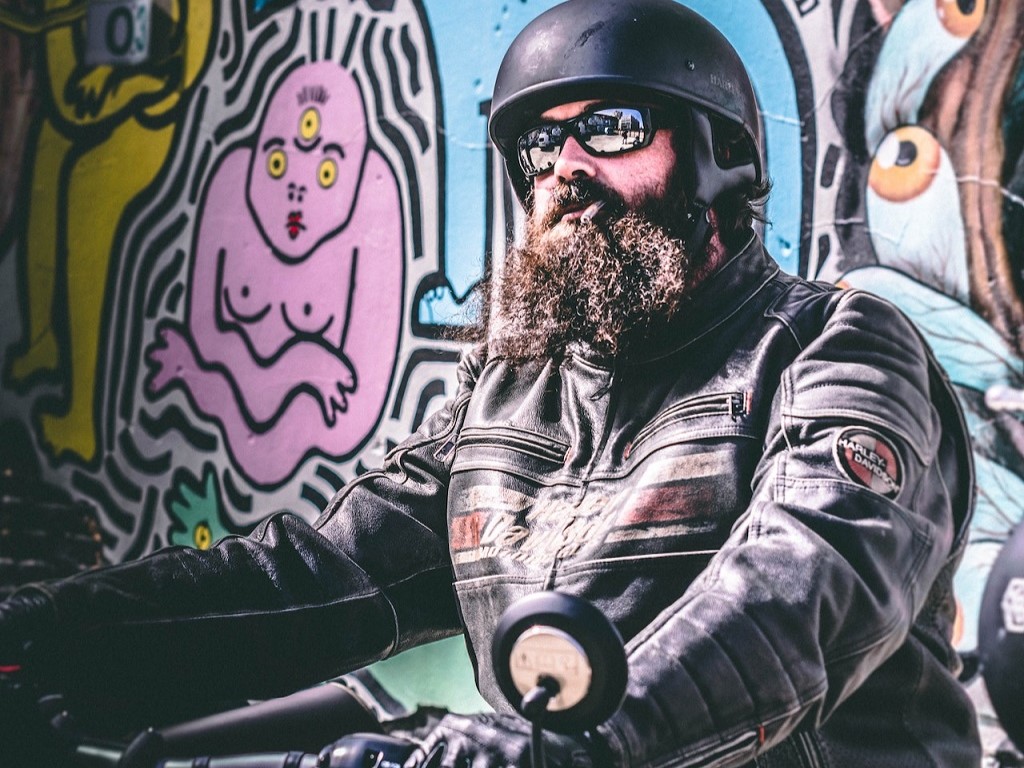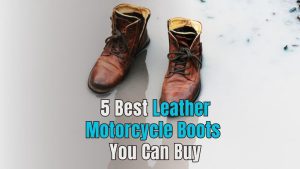Have you ever seen motorcycle jackets labeled “CE certified” and wondered what it really means? I did too, until one chilly autumn morning I found myself lying on the asphalt with a jacked-up bike on top of me. As pain radiated through my arms and legs, I was grateful my jacket, though battered and torn, had kept me from becoming a human crayon on the road.
Only later did I learn the secret of “CE.” It turns out those mysterious letters signify crucial impact and abrasion protection that could be the difference between a scary spill and a tragic ending to your riding journey.
So, join me as we uncover the truth behind “CE certified” and how to ensure the mark you trust really matters.
What is CE Certification for Motorcycle Jackets?
When shopping for motorcycle gear, you’ll often come across the label “CE certified.” But what exactly does CE certification mean for motorcycle jackets or other gear, and how can you ensure the CE rating is legitimate?
CE certification is a voluntary safety standard established by the European Union (EU). Any personal protective equipment (PPE), including motorcycle jackets, that is CE certified has undergone testing to prove it meets EU safety regulations for impact resistance, abrasion resistance, and other performance criteria.
In simple terms, CE certification provides reasonable assurance that a motorcycle jacket will offer you a measure of impact and abrasion protection in the event of an accident.
The tests involved simulating motorcycle crash conditions at different speeds and angles to verify that armor and padding in the jacket can adequately cushion impact forces, restricting how much injury is transmitted to the rider’s body.
CE certification itself does not guarantee absolute safety. But the requirements, testing procedures, and oversight involved raise the bar well above what an untested jacket could provide.
Having proper CE certification shows the manufacturer has made a good faith effort to comply with stringent EU safety standards for motorcycle protective gear.
SEE MORE: Do motorcycle jackets protect your back and spine in a crash?
The History of CE Certification
The CE marking system for certifying safety-related products was established by the European Union in the early 1990s. The goal was to standardize safety requirements for a wide range of products sold across the EU, including personal protective equipment like motorcycle jackets.
Before CE marking, each EU member state had its own safety standards and certification processes for various products. This made it complicated for manufacturers to sell goods throughout the EU.
The CE marking system created a single, harmonized standard for demonstrating that products met essential safety and health requirements to be allowed on the EU market.
Motorcycle jackets and other gear were among the first product categories to be CE certified when the system launched in the 1990s. While the certification was voluntary at first, it soon became essentially mandatory for products to be legally sold in the EU. This was done to provide a high baseline of safety assurance for consumers across Europe.
Over time, CE standards for motorcycle jackets and other protective gear have evolved to become more rigorous and comprehensive. New tests have been added to mimic crash conditions more realistically, and pass/fail criteria have been tightened based on developing safety research.
These ongoing improvements to CE testing procedures and performance requirements aim to keep up with the latest insights into motorcycle accident causation and injury mechanisms. The goal is to ensure CE-certified gear continues to offer EU motorcyclists the highest practically achievable levels of impact and abrasion protection.
The CE Certification Testing Process
To receive CE certification, a motorcycle jacket must undergo rigorous testing to prove it meets the specified performance requirements. The key types of tests involved include:
Impact tests
These aim to simulate common impact scenarios in motorcycle accidents, like hitting the road surface or sliding along it.
Specialized test rigs precisely drop weighted impactors onto armor surfaces from specified heights and angles to evaluate how well the armor absorbs and redistributes impact forces.
Abrasion tests
Abrasion resistance is tested using abrasive materials like sandpaper and weighted sleds or wheels that abrasive materials like sandpaper and weighted sleds or wheels that rub against the jacket’s outer materials at specified pressures and speeds.
This simulates the jacket material sliding across pavement during a crash or slide. The test verifies the material can withstand abrasion without significant damage or loss of protective functionality.
Armor performance tests
Beyond verifying armor shape retention and securing methods, armor inserts are directly tested for their ability to reduce impact forces transferred to the body.
Specialized impact testers precisely strike armor surfaces to ensure impact attenuation meets the minimum performance requirements.
Each test has clearly defined pass/fail criteria based on the relevant CE rating – CE1, CE2 or CE3. Jackets must pass all applicable tests at the rated level to be CE certified.
Those that do demonstrate they can withstand the minimum rated levels of impact energy, abrasion resistance and armor performance expected of protective motorcycle jackets.
Quality control
Additionally, quality control processes are required to ensure consistent production of CE-rated gear that meets the pass/fail criteria.
CE certifying bodies conduct random inspections and tests to verify manufacturers are maintaining the appropriate design, development and production standards.
SEE MORE: How Do I Choose a Motorcycle Jacket for Long Distance Riding?
Identifying CE Certified Jackets
There are two key identifiers to look for to verify that a motorcycle jacket is genuinely CE certified:
The CE logo
This consists of the letters “CE” in a prescribed font and style. The presence of the CE logo indicates the manufacturer claims the product meets EU safety standards. However, the logo alone does not verify that claim.
The CE certification number
This is a four digit number issued by the certifying body that tested the product. This number, along with the CE logo, must be present on the product labeling for it to be considered officially CE certified.
Together, an authentic CE logo and certification number provide solid proof that the correct testing procedures were followed to certify the jacket as meeting EU safety requirements. Look for these markers on the product tag, inside collar, or care label.
Additionally, CE certification comes in three grades to indicate the level of impact protection offered:
- CE 1: Provides the lowest level of impact and abrasion protection. Generally used for basic casual motorcycle riding.
- CE 2: Offers an intermediate level of protection, including extra armor and padding. Suitable for most routine riding.
- CE 3: Specifies the highest level of impact protection. Required armor meets the most stringent performance tests. Intended for demanding riding conditions.
While CE 1-rated jackets may be more affordable, opting for at least a CE 2 jacket is recommended for most riders. The extra armor and impact resistance of a CE 2 or CE 3 jacket is worth the higher price for the added peace of mind they can provide in a crash.
Season-Specific CE Gear
While all CE-certified motorcycle jackets provide a basic level of impact and abrasion protection, there are also specialized jackets designed for specific riding seasons and conditions:
Winter CE gear
For colder weather riding, look for CE-rated winter motorcycle jackets. These feature longer cuts, thermal insulation and waterproofing/water resistance.
Additional armor, heavier padding and hand-warmer pockets also improve protection and comfort in winter riding.
Summer CE gear
In the hot months, opt for ventilated CE motorcycle jackets with features like mesh panels and vents, as well as laser-cut perforations in the leather or textile. These allow heat and moisture to escape while still offering CE-rated armor and padding underneath.
Some summer CE jackets even incorporate antibacterial coatings to reduce odor.
Rain CE gear
For wet weather conditions, fully waterproof CE rain motorcycle jackets are best. These incorporate waterproof/breathable membranes and taped seams to keep you fully protected from the elements.
The CE-rated armor and padding inside a rain jacket helps ensure you have the impact and abrasion protection you need in case of an accidental crash on wet surfaces.
No matter the season, look for CE-certified gear designed specifically for that riding climate. Features that address weather aspects like heat, cold and wetness tend to improve performance, functionality and comfort.
SEE MORE: Beat the Rain: The Best Waterproof Motorcycle Jeans to Keep You Dry
Women’s CE Certified Motorcycle Jackets
While men’s and women’s motorcycle jackets serve the same protective function, women’s CE certified gear has some key differences to consider:
Specific impact zone padding
Women’s bodies and common crash mechanisms differ from men’s, so women’s CE jackets are tailored to provide extra padding in critical impact zones.
These include hips, upper thighs, shoulders and chest to address the specific ways women frequently injure themselves in motorcycle accidents. The armor is also contoured and positioned to align with women’s curves.
Better fit and comfort
Beyond added impact protection, women’s CE motorcycle jackets are purposefully designed to embrace a woman’s shape and provide a more comfortable and secure fit.
Features like adjustable waistbands, zippered arm vents and tailored shoulder yokes help ensure a customized fit that won’t restrict movement or prohibit a full range of riding positions.
This combination of specialty padding and tailored fit allow women’s CE certified jackets to more comprehensively protect the areas where female riders are most prone to injury in crashes.
Look for jackets specifically designed for women that provide:
- Extra padding in hips, thighs, chest and shoulders
- Precise armor positioning around curves
- Adjustable aspects to ensure a customized fit
- Body-mapped comfort throughout the range of riding positions
While women can certainly wear well-fitted men’s CE jackets, gear purposefully designed for a woman’s anatomy tends to offer superior protection and comfort.
SEE MORE: Cheap Women’s Harley Davidson Boots for Biker Ladies
Latest Innovations in CE Gear
Along with traditional armor and padding, the newest CE certified motorcycle jackets are incorporating cutting edge technologies to improve impact protection, comfort and convenience:
Airbag systems
Integrated airbag vests and jackets that inflate within milliseconds of a crash to create an impact-absorbing air cocoon around the rider.
While still relatively expensive, airbag systems have shown great promise in reducing injury severity in motorcycle accidents. Look for CE-rated airbag options that meet key performance standards.
Active cooling jackets
CE garments with active cooling systems that circulate water or air through a network of tubes to wick heat away from the body.
Hose connections, coolant packets and electric pumps enable these jackets to maintain a comfortable temperature even during prolonged highway riding on hot days.
Advanced armor systems
More sophisticated armor inserts are utilizing new materials like fibers, foams, gels, and liquids to absorb impacts in a wider range of directions. Some feature injection ports to add or remove material density as needed for ideal protection.
All feature CE certification numbers confirming they meet the necessary performance criteria for certified impact protection.
Beyond these examples, wearable technology innovators continue developing riding gear with real-time safety features, collision detection, medical monitoring and more. While already quite advanced, continued progress on this front aims to push the boundaries of what’s possible to protect motorcycle riders today and in the future.
Caring for Your CE Certified Jacket
With proper care and maintenance, your CE certified motorcycle jacket can continue to provide years of reliable protection. Here are some basic tips to keep in mind:
Avoid harsh chemicals
Most modern jackets, whether leather or textile, should be washed with mild detergent in cool to lukewarm water.
Avoid bleach or other harsh chemicals that can damage protective coatings, abrade abrasion-resistant materials and degrade impact-absorbing padding over time.
Clean zippers regularly
Zippers are high wear areas that collect dust and debris, so give them an occasional wipe-down with a damp cloth.
Frequently lubricating zipper tracks with a silicone or wax-based lubricant can also help keep them operating smoothly. Snagged or stuck zippers are a common cause of CE jacket failure during a crash.
Re-proof and waterproof as needed
For water-resistant or waterproof jackets, reapply a waterproofing treatment annually or as the material starts to leak. This helps maintain the breathability and protective functionalities that contribute to a safe and comfortable riding experience.
Beyond these basic care reminders, follow all manufacturer recommendations for storing, drying, and generally handling your motorcycle jacket properly.
But most importantly, inspect all armor, padding and seams regularly for signs of damage, deterioration or loose components that could compromise impact protection.
Any anomalies that raise safety concerns should be addressed immediately through prompt repair or replacement.
With a little effort and care on your part, your CE certified motorcycle jacket can remain in “like new” condition to safely see you through many miles on the open road.
Other Important Safety Standards
While CE certification is the primary safety standard for motorcycle jackets sold in Europe, there are other globally recognized certifications that indicate high-quality protective gear:
ECE certification
Established by the United Nations, ECE (formerly EEC) safety standards are similar to CE but more stringent in some respects.
ECE-rated gear is required to be sold within the European Economic Area (EEA), which includes the EU. Many jackets offer both CE and ECE certification.
Snell certification
An independent, non-profit organization, Snell creates some of the most rigorous performance standards for motorcycle helmets and protective gear.
Snell certification tends to indicate extremely high impact protection exceeding minimum CE or ECE requirements.
Beyond these certification programs, many consumers also consider the:
Social and environmental impact of gear
Manufacturers are increasingly focusing on sourcing ethical, sustainable materials and reducing their carbon footprint. Some producers now offer ‘ vegan’ certified leather alternatives and gear made from eco-friendly textiles.
While such features do not inherently make gear safer, they can be an important consideration for ethically-minded consumers.
Ultimately, purchasing the highest quality protective gear you can responsibly afford is among the wisest investments you can make for protecting both you and the environment.
Final Words
The next time you see the curious letters “CE” on a motorcycle jacket tag, remember the story behind them. CE certification represents a good-faith effort by manufacturers to comply with EU safety requirements and properly test their gear. Though no jacket is fail-proof, a truly CE certified option offers you the best possible chance of minimizing injury in the unfortunate event of a crash.
If you found this information on CE certification interesting and useful, be sure to explore more of our content on choosing and caring for the best motorcycle clothing and gear. Stay safe out there, and happy riding!
FAQs about CE-Certified Motorcycle Jackets
What does CE1, CE2 and CE3 stand for?
CE1, CE2 and CE3 refer to the three levels of CE certification for impact protection. CE1 provides the lowest level of protection while CE3 is the highest.
Do CE certified jackets expire?
No, CE certification itself does not expire as long as no changes have been made to the product. However, the materials and armor in the jacket can degrade over time so you should regularly inspect and replace parts as needed.
How long does CE certification last?
CE certification applies to a specific jacket model, not individual products. As long as a jacket retains its original design, fit and components, the certification remains valid.
How much should a CE certified motorcycle jacket cost?
CE certified textile jackets typically range from $100 to $300 while leather CE jackets can cost $300 to $700 or more, depending on the level of protection, features and brand. Higher CE ratings generally command a price premium.
Do CE certified jackets really protect you?
While no gear can eliminate risk, CE certified jackets are designed, tested and proven to minimize injury in the event of an accident by absorbing impacts, cushioning falls and preventing abrasion. They provide the highest level of widely recognized protection.
What’s the difference between CE and ECE certification?
While CE certification is required for products sold in the EU, ECE certification is needed for the European Economic Area (EU plus Iceland, Norway and Liechtenstein). ECE standards tend to be stricter with additional tests and requirements.
Are CE rated jackets better for women?
Yes, women’s CE rated jackets are specially designed for the female body with extra padding in common impact zones, tailored armor placement, and a customized fit that accommodates curves. This targeted design helps provide better protection.
Will a CE rain jacket really keep me dry?
Quality CE rain jackets use waterproof/breathable membranes, taped seams and coated zippers to be truly waterproof. However, they still require careful fastening of all closures and flaps to achieve full protection from rain and wet roads.
Can a CE certified jacket save my life?
While CE certified gear is designed to help minimize injury, there are no guarantees – safety depends on many factors. However, proper CE gear drastically improves your chances of walking away from even high-speed crashes. It can make the difference between life and death.
Do airbag vests require CE certification?
Yes! Like any protective motorcycle gear, airbag vests must undergo rigorous CE testing to prove their airbags deploy correctly and provide sufficient impact protection to be legally sold in the EU. Look for CE certification on all airbag systems.




